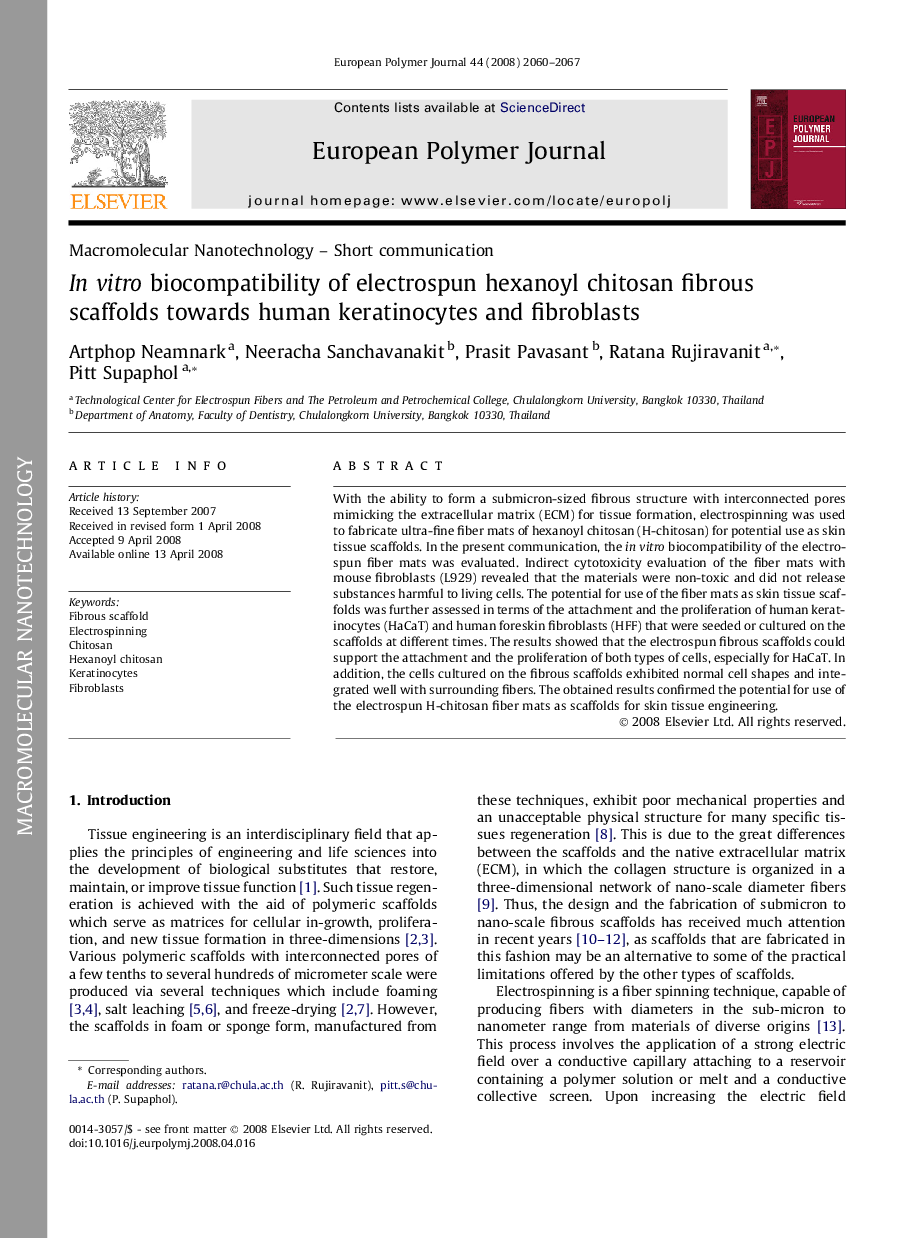| Article ID | Journal | Published Year | Pages | File Type |
|---|---|---|---|---|
| 1400112 | European Polymer Journal | 2008 | 8 Pages |
With the ability to form a submicron-sized fibrous structure with interconnected pores mimicking the extracellular matrix (ECM) for tissue formation, electrospinning was used to fabricate ultra-fine fiber mats of hexanoyl chitosan (H-chitosan) for potential use as skin tissue scaffolds. In the present communication, the in vitro biocompatibility of the electrospun fiber mats was evaluated. Indirect cytotoxicity evaluation of the fiber mats with mouse fibroblasts (L929) revealed that the materials were non-toxic and did not release substances harmful to living cells. The potential for use of the fiber mats as skin tissue scaffolds was further assessed in terms of the attachment and the proliferation of human keratinocytes (HaCaT) and human foreskin fibroblasts (HFF) that were seeded or cultured on the scaffolds at different times. The results showed that the electrospun fibrous scaffolds could support the attachment and the proliferation of both types of cells, especially for HaCaT. In addition, the cells cultured on the fibrous scaffolds exhibited normal cell shapes and integrated well with surrounding fibers. The obtained results confirmed the potential for use of the electrospun H-chitosan fiber mats as scaffolds for skin tissue engineering.
